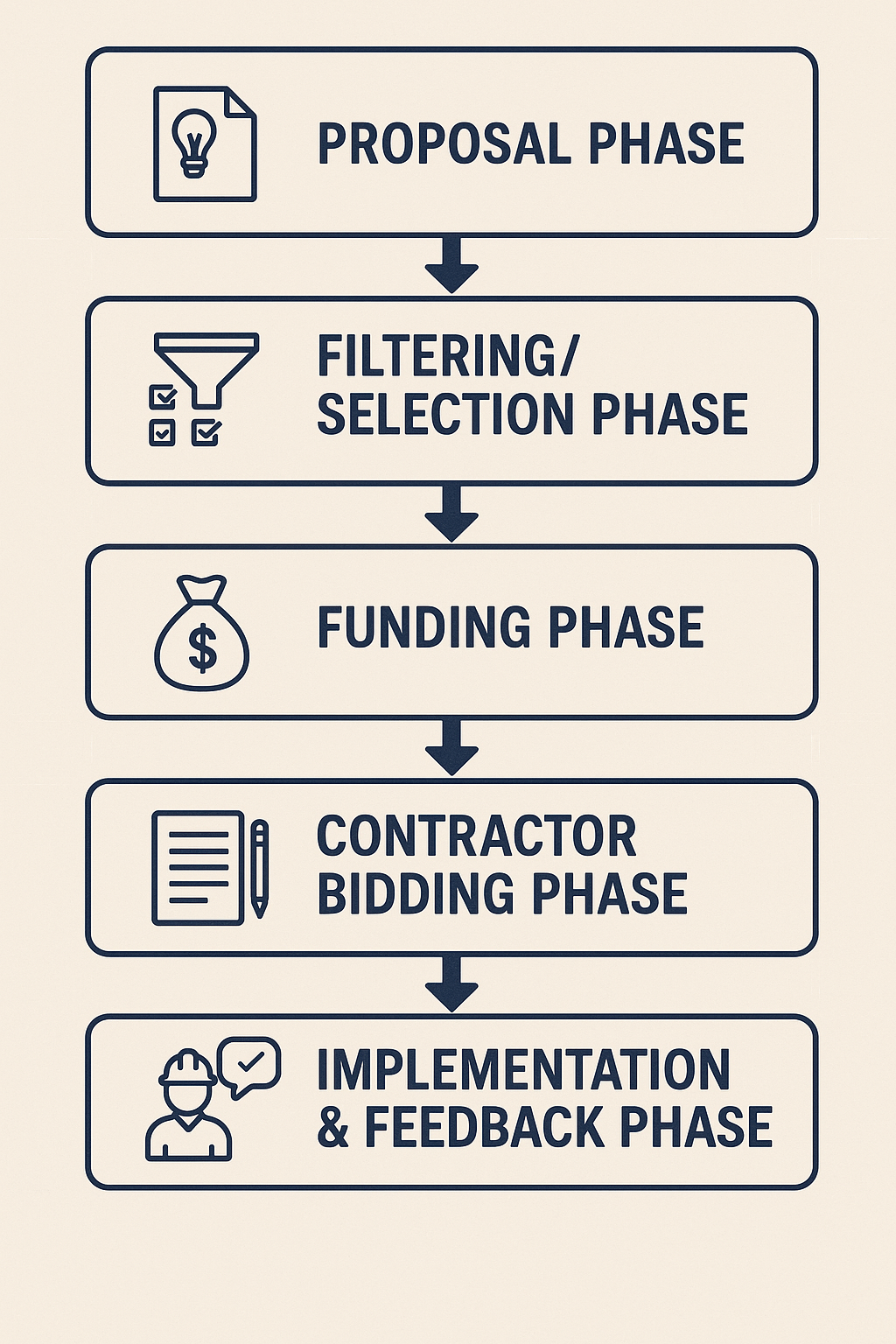Decentralization of National Development and Infrastructure Projects

Research in Ghana shows that nearly one-third of initiated projects are never completed, draining almost 20% of local government capital expenditure (1,2,3,4).
This is a common reality in many developing and underdeveloped countries (5). This article proposes an alternative: empowering citizens to reach a consensus on which infrastructure projects to prioritize and ensuring they are completed over time regardless of which government is in power.
Significance
The impact of this national development challenge in developing and underdeveloped countries cannot be overlooked. In Ghana, for example, addressing it could lead to more completed projects and, ultimately, greater access to essential infrastructure for citizens.
Take this abandoned housing project, for example (2,3), its completion could significantly improve the standard of living for the average citizen. Another heartbreaking case is highlighted here (4).
Motivation
When I first discovered blockchain and smart contract development, one of the first use cases that came to mind was how this technology could empower citizens to actively contribute to their country’s governance.
In most African countries, we citizens often wait for the government to handle even the most basic things. But I’ve always believed that with better coordination, we can simply take action and get things done ourselves.
Back in 2019, the idea of crowdsourcing national development and infrastructure projects came to me naturally. Through my research, I discovered similar initiatives, like the Stanford Participatory Budgeting Platform, and uncovered a broader academic community working in the field of Computational Social Choice.
Mechanism
The objective of this process is to:
- Enable concerned citizens to propose projects for consideration.
- Allow proposed projects to be voted on.
- Provide a mechanism for introducing funding into the system.
- Open bidding opportunities for contractors.
- Ensure projects are executed and transparently tracked to completion.
With these objectives in mind, the process unfolds across five phases:
- Proposal Phase
- Filtering/Selection Phase
- Funding Phase
- Contractor Bidding Phase
- Implementation & Feedback Phase
Transitioning from the proposal phase to the implementation phase for a set of projects constitutes a round. After a round begins, projects are funded and move into implementation. There’s no need to wait for their completion before starting another round; new proposals and voting can commence immediately.

Proposal Phase
Every citizen has the opportunity to propose a project of their choice. It’s their responsibility to clearly document the need for the project and present a compelling argument. The platform should support uploading images, videos, and other relevant materials to strengthen their case. Additionally, proposers are required to attach a reasonable budget estimate. Proposals can also be submitted collaboratively by groups of citizens.
Filtering/Selection Phase
After the proposal phase, citizens will have the opportunity to vote for the projects they support. Any viable voting mechanism can be applied at this stage, depending on the goals of the community. It could be something simple, like a straightforward one-person-one-vote system, or more sophisticated approaches like quadratic funding. An interesting method I personally favor is allowing everyone to select their top n projects in order of preference, based on the number of projects we aim to advance to the next stage.
Funding Phase
At this stage, stakeholders and interested third parties, including citizens, are invited to contribute funds to the project funding pool. This phase can remain open indefinitely, allowing funds to continuously accumulate in preparation for future projects. Importantly, the selection of projects should remain completely independent of available funding. This ensures that projects are chosen purely based on the needs of the community, not on financial influence.
Contractor Bidding Phase
With projects approved and funding secured, the platform should facilitate a transparent bidding process for assigning projects to contractors. Contractors can place their bids, and the community votes to decide who should handle each project. To ensure accountability, funds are released in stages, tied to the successful completion of project milestones.
Implementation & Feedback Phase
As contractors work through project milestones, they are expected to provide regular progress updates directly on the platform. Citizens remain actively involved throughout, continuously reviewing the work and offering feedback. If performance falls short, the community holds the collective power to revoke the contract and reassign the project to a more capable contractor.
Final Remarks
Surely, this proposed mechanism can be refined and improved, and I look forward to sparking meaningful discussions around it. But the core idea remains: it’s possible to coordinate and take action on the things that truly matter to us. While traditional governments operate in a centralized manner, a decentralized alternative could prove more effective for certain types of projects. And this doesn’t have to start at a national scale; it can be tested and proven on a smaller, community level.